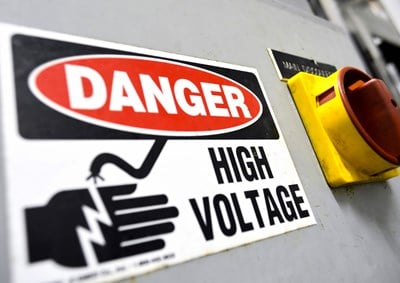Heart disease is the leading cause of death for both men and women in the United States. Approximately 805,000 Americans have a heart attack each year. Knowing the signs of trouble and getting emergency medical help immediately can dramatically increase your chances of survival and recovery.
A heart attack is not always a sudden, deadly event. Often it is an evolving process during which a clot forms in an artery of the heart, depriving the heart of blood and oxygen. The longer the heart attack process continues, the more permanent damage is done to otherwise healthy heart muscle.
Lay rescuers can be trained to operate portable, computerized, automated external defibrillators (AEDs) used to apply electric shock to restart a heart that has developed a chaotic rhythm called ventricular fibrillation, the most common cause of sudden cardiac arrest.
Many people ignore the warning signs of a heart attack or wait until their symptoms become unbearable before seeking medical help. Others wait until they are absolutely sure it’s a heart attack because they worry they will look foolish if it is a false alarm. These reactions can result in dangerous delays.
Only skilled medical professionals can determine if someone is having a heart attack. Your responsibility is to recognize the warning signs and act quickly. If you are having a heart attack, you may be moved from the emergency department to a catheterization lab to receive angioplasty or a stent, or possibly heart bypass surgery. In addition, hospitals have lifesaving medications that are designed to stop a heart attack by dissolving the clot and restoring blood flow to the heart, although these medications work best when given within the first one or two hours after the onset of heart attack symptoms, when the damage is still limited.
People often will experience some, but not all, of the following symptoms, which may come and go:
- Uncomfortable pressure, fullness, squeezing sensation or pain in the center of the chest, lasting more than a few minutes, or it goes away and comes back.
- Pain that spreads to the shoulders, neck, jaw, arms or back.
- Chest discomfort accompanied by lightheadedness, fainting, sweating, nausea or shortness of breath.
Some less common warning signs of heart attack that should be taken seriously — especially if they accompany any of the above symptoms — include:
- Shortness of breath and difficulty breathing.
- Abnormal chest pain (angina), stomach, or abdominal pain. (Symptoms may feel like indigestion or heartburn.)
- Nausea or dizziness.
- Unexplained anxiety, weakness, or fatigue.
- Palpitations, cold sweat or paleness.
As with men, women’s most common heart attack symptom is chest pain or discomfort. Women are more likely than men to experience shortness of breath, nausea/vomiting and back or jaw pain.
If you suspect someone is having a heart attack:
- Call 911 or your emergency services number immediately. Stay with the person until the ambulance arrives. Do not attempt to drive the person to the hospital; if his or her condition should worsen, there is nothing you can do to help while driving.
- After 911 is called, the EMS dispatcher will likely give pre-arrival instructions (when appropriate) for the administration of aspirin (not acetaminophen, ibuprofen or naproxen) and nitroglycerin (if prescribed) while emergency-response units are enroute to the scene The ideal aspirin dose in such instances is two to four baby aspirin or one full or extra strength tablet (325 or 500mg), and chewing helps get the aspirin into the bloodstream faster than swallowing it whole. (The patient should not be given aspirin if his or her physician has advised otherwise, e.g., because of allergies or possible harmful interactions with other medications or known disease complications).
- If the person is conscious, keep the person calm and help him or her into a comfortable position. The victim should stop all physical activity, lie down, loosen clothing around the chest area, and remain calm until the ambulance arrives.
- If the person becomes unconscious, make sure the person is lying on his or her back. Clear the airway and loosen clothing at the neck, chest and waist. Check for breathing and pulse; if absent, and if trained to do so, begin CPR.
 American College of Emergency Physicians
American College of Emergency Physicians







